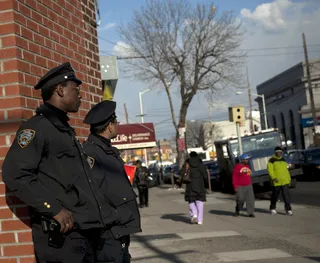Stop and Frisk Myths Debunked
The truth is revealed about the NYPD's controversial tactic.

1 / 7
Debunking NYPD's Controversial Tactic - Since its inception, the NYPD’s controversial stop-and-frisk program has been under scrutiny for disproportionately targeting African-Americans and Latinos. The trial challenging the program concluded in May and a New York federal judge is deciding its future. Discussion Papers, released by the Urban Institute Roundtable, debunks the many myths attached to the tactic. — Natelege Whaley (Photo: GettyImages)

2 / 7
Myth #1: All Cops Have a Reason to Stop and Frisk You - The Truth: An alarming share of stops do not meet constitutional standards, with 14 percent of documented stops in New York City failing to meet the original reasonable suspicion standard set forth by the court in the 1968 Terry v. Ohio case ruling.Another study found that up to 29.7 percent of pedestrian searches in a medium-sized American city were unconstitutional (Gould and Mastrofski, 2004). (Photo: Allison Joyce/Getty Images)
Photo By Photo: Allison Joyce/Getty Images

3 / 7
Myth #2: Stop-and-Frisk Reduces Crime - The Truth: Only 20 percent of studies found an increase in community policing presence resulted in crime reductions; 50 percent of studies found no effect on crime, and the remaining 30 percent observed an increase in crime. (Photo: AP Photo/John Minchillo)

4 / 7
Myth #3: Stop-and-Frisks Lead to Arrests - The Truth: From 2006 to 2010, within a perimeter of about eight blocks of Brownsville, Brooklyn, the New York Police Department made 52,000 stops, with less than 1 percent of stops resulting in an arrest.(Photo: Allison Joyce/Getty Images)

5 / 7
Myth #4: Minorities Are Only Targeted for Stops Because of Race - The Truth: The more crime in an area, the more likely Blacks were the target of stop-and-frisk. Blacks in New York City were stopped at a rate 20-30 percent less than their representation in crime suspect descriptions, and arrest data and suspect descriptions showed that police stopped minority populations in a manner informed by crime concentrations.(Photo: Brian Harkin/Getty Images)
ADVERTISEMENT

6 / 7
Myth #5: Stop-and-Frisk Makes Citizens Feel Safer - The Truth: For young Black males this is not the case. In this area of Brownsville with 14,000 residents, young African-American males overwhelmingly bore the brunt of these policies by incurring multiple stops per year as they went about their daily lives. (Photo: REUTERS/Lucas Jackson)
